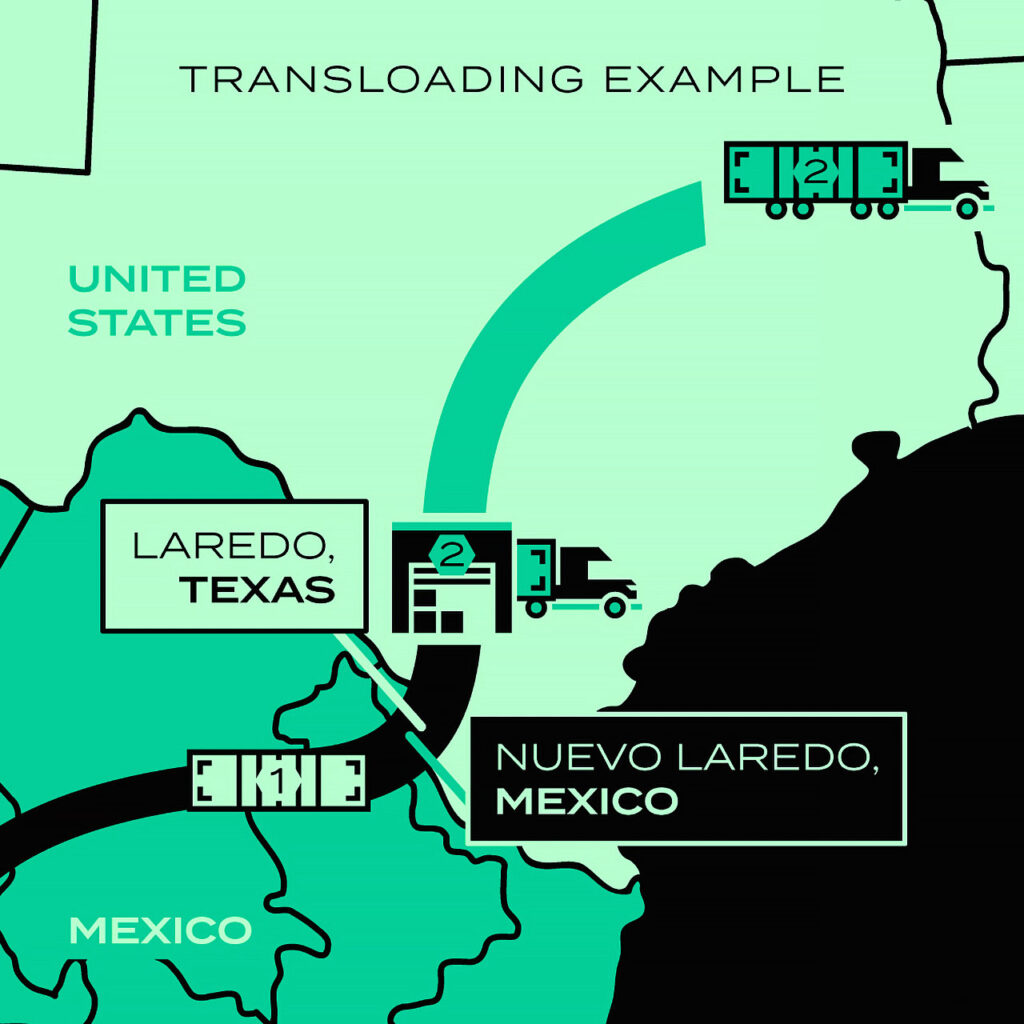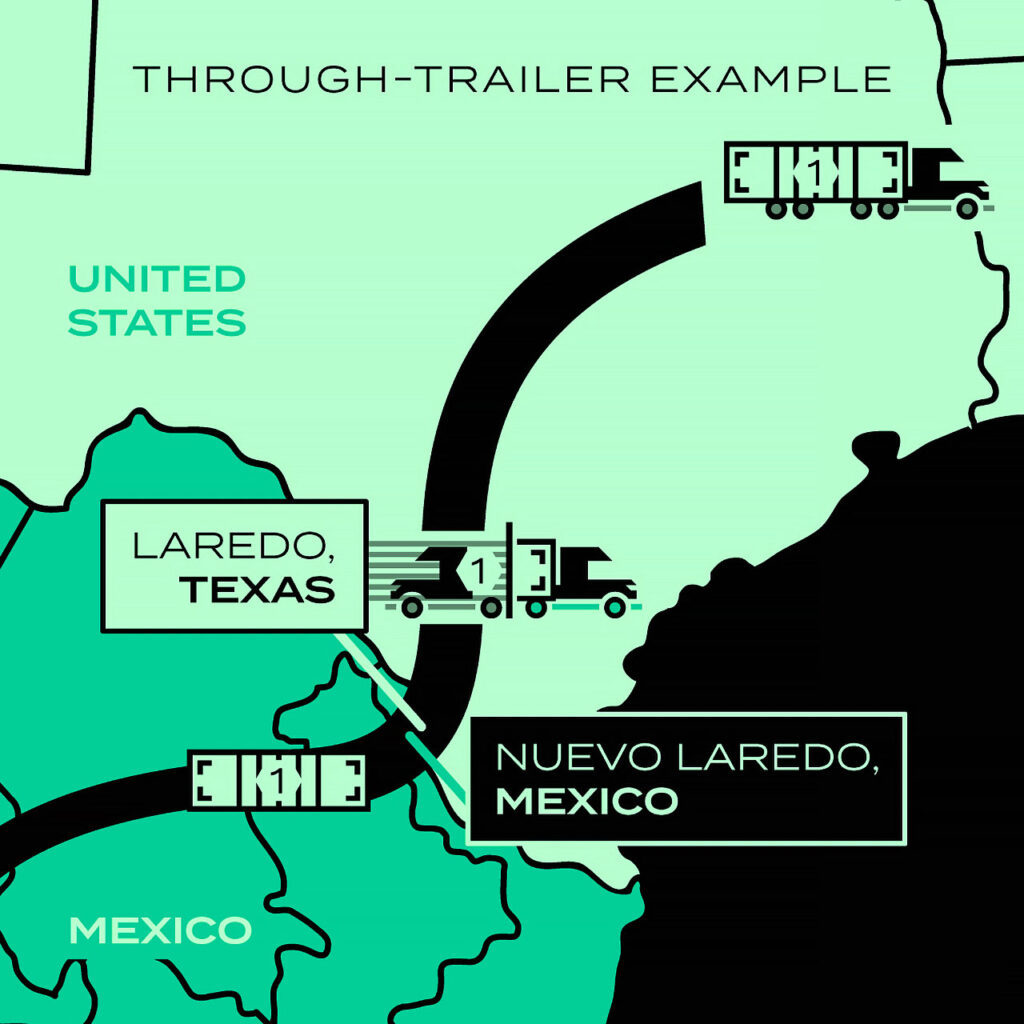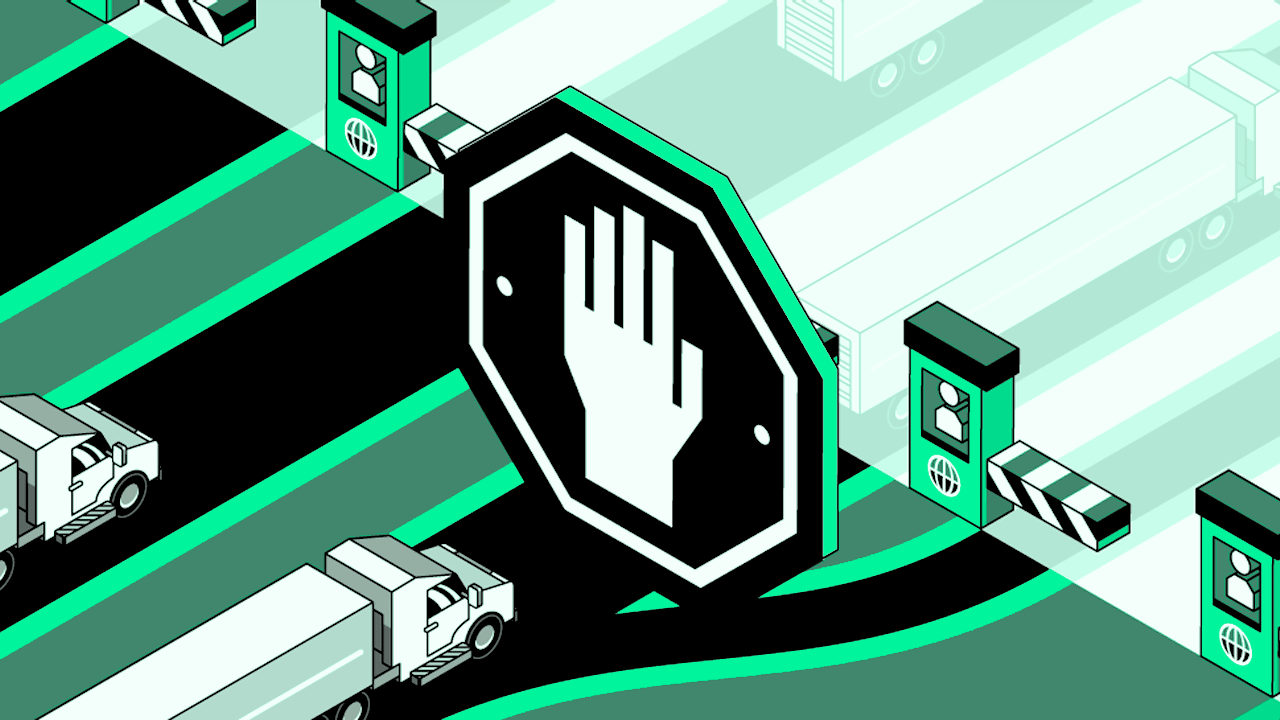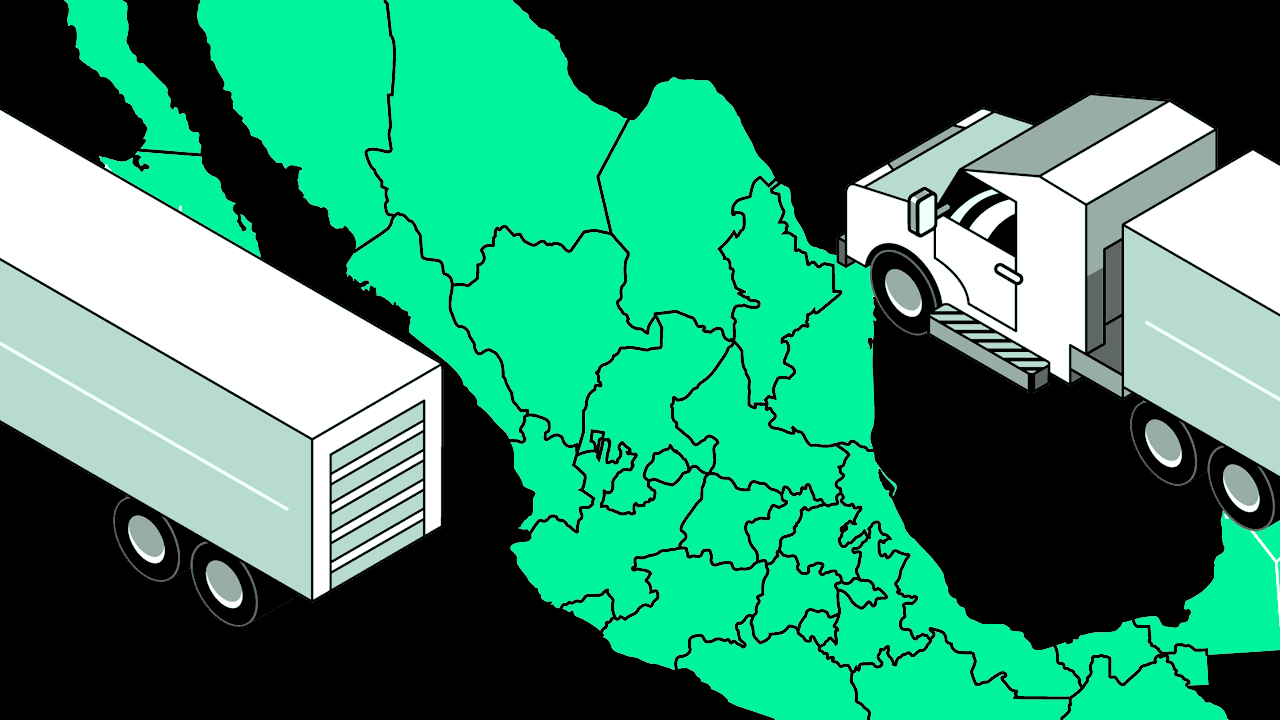When you need to move truckload freight across the U.S./Mexico border, you have two service options:
- Transloading
- Through-trailer
Both transloading and through-trailer are effective ways to get your product over the border (whether northbound or southbound). So how do you choose which service is right for your freight?
Cross-border Mexico freight can be complex, so we’ll try to make it simple in this post.
We’ll walk through the step-by-step process for both transloading and through-trailer, then outline the pros and cons of each so you can choose the best option for your freight.
Your Border Crossing Service Options
What Is Transloading in Mexico Cross-Border Shipping?
A simple definition of transloading is the process of transferring freight from one trailer to another during a border crossing.
For cross-border Mexico freight, transloading will typically involve four unique providers: a Mexico-based carrier, a crossing carrier (aka drayage or border carrier), a transload facility and a U.S.-based carrier.
To make it simple, many shippers work with an experienced 3PL to coordinate all of these different providers and manage the entire process, allowing the shipper the simplicity of a single point of contact.
Step-by-Step Overview of the Transload Process:

Note: the example below is northbound, but a southbound shipment operates in nearly the same way, only in reverse (the difference is that the transload will always take place in the U.S., so it will occur prior to crossing the border for southbound shipments).
- A Mexico-based carrier picks up the freight at the shipper, then takes it to a secure yard near the border and drops the trailer.
- A crossing carrier then takes the trailer to the border, clears customs and crosses the border, and unloads at a nearby transload facility in the U.S.
- A U.S.-based carrier arrives at the transload facility.
- The transload facility transfers the product to the U.S. carrier’s trailer.
- The U.S. carrier makes the final delivery.
Transload cross-border service involves 2 trailers and 4 providers (3 drivers and 1 transload facility).
What Is Through-Trailer Service in Mexico Cross-Border Shipping?
When you ship through-trailer, the freight stays in same trailer throughout the entire cross-border shipping process.
But this doesn’t mean it only involves one driver. Let’s look at a couple common misconceptions about through-trailer vs. transloading.
2 Common Misconceptions About Through-Trailer Service
- The same driver makes the pick up and final delivery.
FALSE: Though the trailer that picks up the freight in Mexico will be the same trailer delivered in the U.S., three different drivers (often from different trucking companies) will move the trailer from origin to destination: a Mexico driver, a crossing driver and a U.S. driver. This is because Mexico-based drivers typically do not have the B-1 visas they would need to cross the border themselves. - The trailer will not be opened (seal will remain intact).
FALSE: Though the freight will not be fully offloaded and moved into a different trailer, U.S. or Mexico customs will still (most likely) inspect the trailer. This means breaking the seal, opening up the doors, and sometimes, removing freight for a closer look.
“Many companies think that through-trailer shipping is safer than transloading because the seal on the trailer will not be broken. The reality is, due to government regulations at the border, both methods could require the seal to be broken.”
– Kelsie Kam, MX Director, Operations, RXO
Step-by-Step Overview of the Through-Trailer Process:

Note: the example below is northbound, but a southbound shipment operates the same way, only in reverse.
- A Mexico-based carrier with a trailer interchange agreement with a U.S.-based carrier picks up the freight at the shipper in Mexico and drops the trailer in a secure yard near the border.
- A border drayage driver (crossing driver) takes the trailer to the border, clears customs and crosses the border, and drops it in their U.S. partner carrier’s secured yard (just north of the border).
- The U.S. carrier dispatches a driver who makes the final delivery.
Through-trailer service involves 1 trailer and 3 drivers (often from 3 different trucking companies).
Why You Should Transload Your Cross-Border Mexico Freight: 3 Benefits
When choosing a cross-border service, shippers often automatically assume through-trailer service is the better option without fully considering the upside of transloading.
This makes sense — less freight handling and the same trailer, what’s not to like? But transloading is equally secure as through-trailer, and often more efficient.
Let’s look at some of the ways transloading freight can help your cross-border supply chain.
1. More (& More Flexible) Carrier Capacity
With transloading, you access the full capacity of two independent carrier bases — any Mexico carrier can be paired with any U.S. carrier on a shipment. This allows for increased options and superior flexibility.
For through-trailer service, you’re limited to carriers that have an interchange agreement with a counterpart carrier on the other side of the border. This is a significantly smaller capacity pool, which can limit your options.
2. Mitigate Delays at the Border
With the superior flexibility provided by transloading, it’s easier to source carriers on both sides of the border who can pick up and deliver within your desired time frame.
Through-trailer shipments are reliant on the limited capacity of the two carriers in the interchange agreement, which can lead to delays at the border.
Travel restrictions on B1 visa-holding drivers, who are not permitted to idle in the U.S., can cause further delays and charges. If a U.S.-based receiver cannot provide a timely delivery appointment, the driver will have to wait with the freight on the Mexico side of the border, which leads to holding costs and/or paperwork updates with the customs broker.
As nearshoring expands in Mexico, these delays are becoming increasingly common with the imbalance of northbound vs. southbound freight.
3. Reduced Shipping Costs
A larger capacity pool on both sides of the border means more carriers and potentially more efficient options. With transloading service, you can source carriers whose networks sync up with yours, driving more cost-effective rates.
What Freight Works Best for Transloading? For Through-Trailer Service?
Experienced, specialized transloading facilities located near major border crossings can handle virtually any product.
That said, freight loaded on pallets or slip sheets is easiest to transload, particularly raw materials, food and beverage, and consumer packaged goods.
Flatbed shipments, over-dimensional product, and any freight that requires specialized loading is usually better off with through-trailer service.


